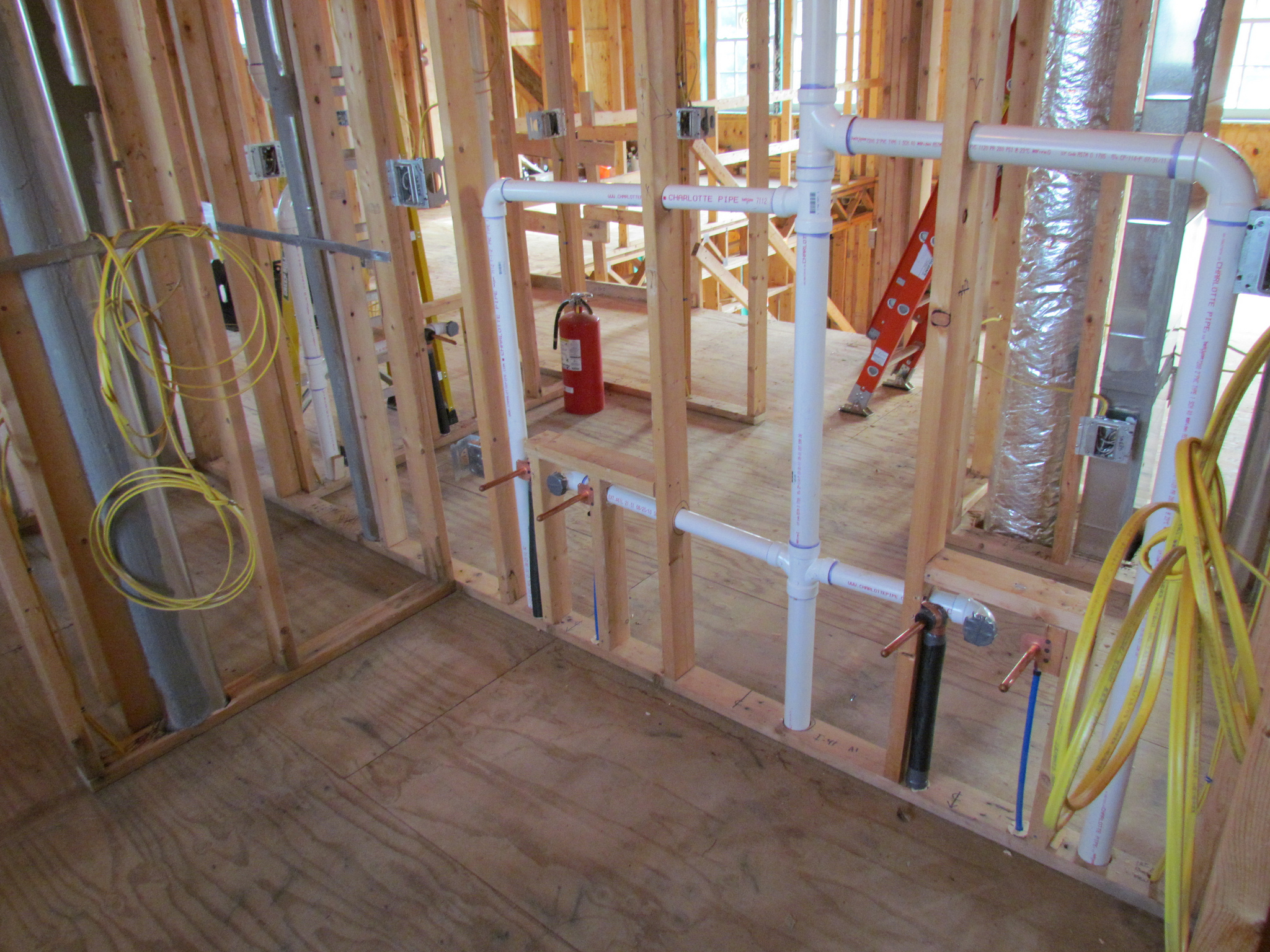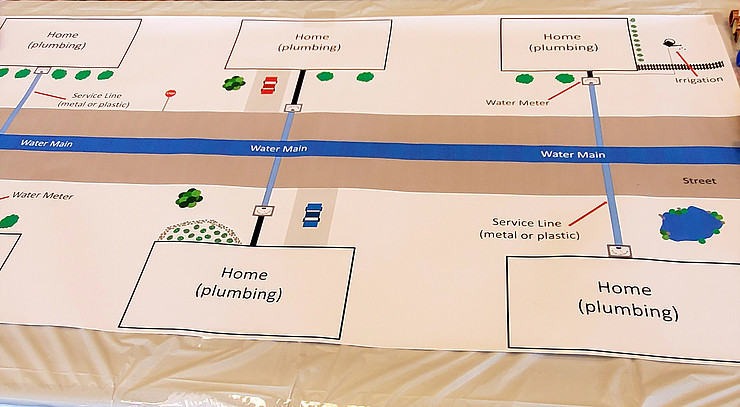Why Your Home's Plumbing System Works: Structure
Why Your Home's Plumbing System Works: Structure
Blog Article
Do you find yourself looking for ideas on Exploring Your Homes Plumbing Anatomy?

Recognizing exactly how your home's plumbing system works is necessary for every single home owner. From supplying clean water for drinking, food preparation, and showering to securely getting rid of wastewater, a properly maintained pipes system is vital for your household's health and wellness and comfort. In this detailed guide, we'll check out the intricate network that composes your home's pipes and offer suggestions on maintenance, upgrades, and dealing with typical concerns.
Intro
Your home's pipes system is more than just a network of pipelines; it's an intricate system that guarantees you have accessibility to tidy water and effective wastewater removal. Knowing its parts and just how they collaborate can aid you protect against expensive repair services and make sure whatever runs smoothly.
Standard Components of a Pipes System
Pipelines and Tubing
At the heart of your plumbing system are the pipelines and tubes that lug water throughout your home. These can be constructed from different products such as copper, PVC, or PEX, each with its advantages in terms of sturdiness and cost-effectiveness.
Fixtures: Sinks, Toilets, Showers, and so on.
Components like sinks, toilets, showers, and tubs are where water is used in your house. Comprehending how these fixtures connect to the pipes system assists in identifying issues and intending upgrades.
Valves and Shut-off Points
Shutoffs regulate the flow of water in your pipes system. Shut-off shutoffs are crucial during emergencies or when you require to make repairs, enabling you to separate parts of the system without interrupting water circulation to the entire house.
Water Supply System
Main Water Line
The major water line links your home to the local water system or an exclusive well. It's where water enters your home and is dispersed to numerous fixtures.
Water Meter and Pressure Regulatory Authority
The water meter procedures your water use, while a stress regulatory authority makes certain that water streams at a risk-free pressure throughout your home's pipes system, stopping damage to pipes and fixtures.
Cold Water vs. Hot Water Lines
Understanding the distinction in between cold water lines, which provide water straight from the main, and hot water lines, which bring heated water from the hot water heater, helps in fixing and preparing for upgrades.
Water drainage System
Drain Piping and Traps
Drain pipes bring wastewater far from sinks, showers, and toilets to the drain or sewage-disposal tank. Catches prevent drain gases from entering your home and likewise catch debris that can cause obstructions.
Ventilation Pipelines
Air flow pipes enable air right into the drainage system, stopping suction that can slow drain and create traps to vacant. Proper air flow is crucial for preserving the integrity of your plumbing system.
Significance of Appropriate Water Drainage
Ensuring proper drainage avoids backups and water damage. Consistently cleaning drains and keeping traps can prevent pricey repair services and extend the life of your plumbing system.
Water Heating System
Sorts Of Hot Water Heater
Hot water heater can be tankless or typical tank-style. Tankless heating systems warmth water as needed, while containers save warmed water for prompt usage.
Exactly How Water Heaters Attach to the Pipes System
Comprehending just how hot water heater attach to both the cold water supply and warm water distribution lines assists in identifying issues like inadequate hot water or leakages.
Upkeep Tips for Water Heaters
Routinely flushing your hot water heater to get rid of sediment, checking the temperature settings, and checking for leakages can expand its life expectancy and enhance energy effectiveness.
Typical Plumbing Concerns
Leaks and Their Reasons
Leakages can take place as a result of maturing pipes, loose fittings, or high water pressure. Addressing leakages without delay prevents water damage and mold and mildew development.
Blockages and Obstructions
Clogs in drains pipes and toilets are usually caused by purging non-flushable items or a buildup of grease and hair. Making use of drainpipe displays and bearing in mind what goes down your drains can stop blockages.
Indications of Pipes Issues to Look For
Low water stress, sluggish drains pipes, foul odors, or uncommonly high water expenses are indications of possible pipes issues that need to be addressed quickly.
Plumbing Maintenance Tips
Regular Evaluations and Checks
Arrange annual pipes examinations to capture concerns early. Search for indications of leaks, corrosion, or mineral buildup in faucets and showerheads.
DIY Upkeep Tasks
Simple jobs like cleaning faucet aerators, checking for commode leakages making use of color tablet computers, or insulating revealed pipelines in chilly climates can prevent significant pipes concerns.
When to Call a Professional Plumbing Professional
Know when a pipes concern requires specialist know-how. Attempting complicated repair work without correct understanding can bring about more damage and greater fixing costs.
Upgrading Your Plumbing System
Factors for Updating
Updating to water-efficient components or replacing old pipes can boost water quality, minimize water costs, and increase the value of your home.
Modern Plumbing Technologies and Their Advantages
Discover technologies like wise leak detectors, water-saving toilets, and energy-efficient water heaters that can save cash and lower environmental impact.
Expense Factors To Consider and ROI
Calculate the in advance prices versus long-term cost savings when thinking about pipes upgrades. Several upgrades spend for themselves through decreased utility expenses and less fixings.
Ecological Impact and Conservation
Water-Saving Fixtures and Appliances
Installing low-flow faucets, showerheads, and commodes can considerably decrease water use without compromising performance.
Tips for Minimizing Water Usage
Straightforward habits like taking care of leaks immediately, taking shorter showers, and running full tons of laundry and dishes can conserve water and lower your utility expenses.
Eco-Friendly Plumbing Options
Think about lasting pipes materials like bamboo for flooring, which is durable and environmentally friendly, or recycled glass for kitchen counters.
Emergency Readiness
Actions to Take During a Plumbing Emergency
Know where your shut-off shutoffs lie and exactly how to switch off the supply of water in case of a burst pipeline or significant leak.
Importance of Having Emergency Situation Calls Helpful
Maintain get in touch with info for regional plumbing professionals or emergency services readily offered for quick reaction during a pipes crisis.
Do It Yourself Emergency Situation Fixes (When Applicable).
Short-term fixes like using duct tape to patch a dripping pipe or placing a bucket under a dripping faucet can reduce damages until a specialist plumbing shows up.
Final thought.
Comprehending the anatomy of your home's plumbing system encourages you to preserve it effectively, conserving time and money on repair services. By complying with normal maintenance routines and remaining educated concerning modern pipes technologies, you can guarantee your pipes system operates efficiently for years to come.
HOW YOUR PLUMBING SYSTEM WORKS
Which Pipes Do What?
Blue lines = fresh water supply entering the building
Red lines = hot water supply entering the building
Grey lines = pipes carrying waste away from the building and venting pipes carrying gases away from the building (through the roof)
YOUR MAIN PLUMBING SYSTEMS
There are two main plumbing systems that support your home s basic plumbing needs one that brings clean water into your home, and one that sends dirty water away from your home. Connected to the toilet, bath, shower, and other faucets in your home, these two systems keep your water flowing in the right directions.
ACCESSING FRESH WATER
Fresh and clean water is brought into your home through the main water supply line . Filtered through one pipe, this water is pressured to flow into the various fixtures in your home at any given time.
This water can be sourced from a well located on your property, a pond or river (mostly cottages), or, as in most cases, from the city s municipal water treatment centre. However, it is important to note that water that is untreated, such as the water siphoned from ponds or rivers, may not be safe to drink. Personal water supplies always need to be treated for hardness and contaminants before consumed.
MUNICIPAL WATER SUPPLIES
Improve taste and odour
Remove sediment
Eliminate hardness
Reduce chlorine
COLD WATER SUPPLY VS. HOT WATER SUPPLY
Cold water flows into your home or building through the service line, which then distributes hot or cold water to your fixtures. This line is most commonly run through a central column that runs floor to floor. Hot water runs in short and straight pipes as the longer the pipeline, the more heat that will be lost in the transfer. Having shorter pipes also allows residents to access hot water more quickly.
WASTE WATER SYSTEM
Your wastewater system is divided into two parts pipes that send wastewater away from your home and venting pipes that send sewer gas away from your home. Sewage water travels through pipes that flush the water and waste towards local sewers that are operated and managed by your city or town. Most sewer systems rely on gravity to move the wastewater to where it needs to go.
The further away from your toilet or sink, the larger wastewater pipes become. This allows for waste to be disposed of from various parts of your home or business at once without pipe blockages. The angle and flow of these pipes are also essential for keeping your waste pipes clear of build up.
https://harrisplumbing.ca/how-your-home-plumbing-system-works/

HOW YOUR PLUMBING SYSTEM WORKS
Which Pipes Do What?
YOUR MAIN PLUMBING SYSTEMS
There are two main plumbing systems that support your home s basic plumbing needs one that brings clean water into your home, and one that sends dirty water away from your home. Connected to the toilet, bath, shower, and other faucets in your home, these two systems keep your water flowing in the right directions.
ACCESSING FRESH WATER
Fresh and clean water is brought into your home through the main water supply line . Filtered through one pipe, this water is pressured to flow into the various fixtures in your home at any given time.
This water can be sourced from a well located on your property, a pond or river (mostly cottages), or, as in most cases, from the city s municipal water treatment centre. However, it is important to note that water that is untreated, such as the water siphoned from ponds or rivers, may not be safe to drink. Personal water supplies always need to be treated for hardness and contaminants before consumed.
MUNICIPAL WATER SUPPLIES
COLD WATER SUPPLY VS. HOT WATER SUPPLY
Cold water flows into your home or building through the service line, which then distributes hot or cold water to your fixtures. This line is most commonly run through a central column that runs floor to floor. Hot water runs in short and straight pipes as the longer the pipeline, the more heat that will be lost in the transfer. Having shorter pipes also allows residents to access hot water more quickly.
WASTE WATER SYSTEM
Your wastewater system is divided into two parts pipes that send wastewater away from your home and venting pipes that send sewer gas away from your home. Sewage water travels through pipes that flush the water and waste towards local sewers that are operated and managed by your city or town. Most sewer systems rely on gravity to move the wastewater to where it needs to go.
The further away from your toilet or sink, the larger wastewater pipes become. This allows for waste to be disposed of from various parts of your home or business at once without pipe blockages. The angle and flow of these pipes are also essential for keeping your waste pipes clear of build up.
https://harrisplumbing.ca/how-your-home-plumbing-system-works/
I ran across that article about The Inner Workings of Your Home's Plumbing while doing a lookup on the web. Enjoyed reading our post? Please quickly share it. Let somebody else find it. Bless you for your time. Return soon.
Check Us Out Report this page